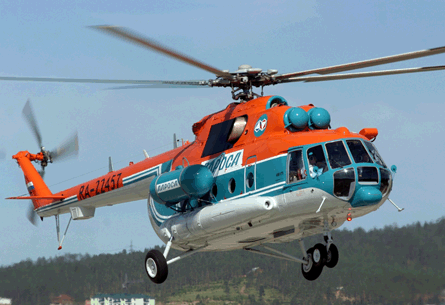News of two helicopter projects last month - one Russian, the other foreign - shed light on the future path for the nation's helicopter industry.
The first development came at a groundbreaking ceremony at Tomilino, near Moscow, for a final assembly plant run by HeliVert, a joint venture of Russian Helicopters and AgustaWestland, to produce the latter company's AW139 medium twin.
The project began with the signing of a memorandum of understanding "for co-operation development in the field of helicopter production" in summer 2007, with an agreement for the joint venture being signed at 2008's Farnborough air show.
The 15-seat AW139 is expected to start emerging from the 40,000m² (430,500ft²) assembly plant in 2011. Just five units will be produced in 2011, with a relatively modest projected final capacity "in excess of 20" helicopters being produced by 2015. The plant aims primarily to satisfy demand for the AW139 in Russia and the CIS nations, although they will be available for export worldwide through the AgustaWestland sales network.
Speaking at the groundbreaking ceremony, Andrey Reus, director general of Russian aerospace holding company Oberonprom, said: "The start of the plant's construction signifies a new stage of the growing, mutually beneficial co-operation between Russian and Italian helicopter manufacturers.
"Thanks to it, we will gain access to new technical production solutions and high helicopter servicing quality standards. We will seek to broaden our co-operation, including by gradually localising Italian helicopter manufacture in Russia."
June also saw the release of the first detailed technical information on the Mil Mi-171M, the latest iteration of the Mil-8/17 medium, twin-turbine transport. The Mi-171M project was announced in 2009 and production is due to start at the Ulan-Ude Aviation Plant in 2013.
 |
|---|
© Russian HelicoptersThe replacement for the Mil Mi-171 (above) is due to start production in 2013 |
The model will replace the existing Mi-171 and major improvements will include more powerful Klimov VK-2500 engines, a modernised power train, composite main rotor blades and X-shaped tail rotor in place of the current three-bladed model.
In a move that will save considerable cost throughout the aircraft's life, the crew will drop from three to two. The helicopter will be fitted with a digital autopilot in standard configuration, with the option of a glass cockpit. Range without any additional fuel tanks will rise from 325nm (600km) to an estimated 460nm.
Further evidence that Russian aerospace manufacturers are increasingly alert to the need for lower through-life costs came from Russian Helicopters' announcement that it plans to "greatly increase" the time between overhauls on the Mil-171M.
Its after-sales service development strategy is being boosted by the creation of new overseas maintenance facilities in Sharjah, Sudan and Uzbekistan.
However, Mil says it remains a priority to retain the relatively low "sticker price" and expects that the cost per flying hour will be lower than that of the earlier Mi-17/171s.
The company will be hoping that prospective buyers will replace earlier Mi-8/17s, of which several thousand remain in service, with the new variant.
Source: Flight Daily News



















